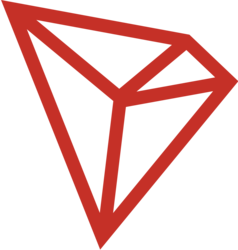Bitmain made a significant announcement at the World Digital Mining Summit (WDMS) in Hong Kong on September 22, introducing its cutting-edge Antminer S21 and S21 Hydro ASIC miners. These new miners are creating quite a buzz in the industry as they promise impressive performance metrics. The Antminer S21 boasts a hash rate of 200 terahashes per second (TH/s) with an energy efficiency of 17.5 joules per terahash (J/T). Meanwhile, the S21 Hydro pushes the boundaries with 335 TH/s and an energy efficiency of 16 J/T. Notably, this marks a departure from the past, where most Bitcoin ASICs operated at over 20 J/T.
As electricity costs continue to climb and the Bitcoin halving scheduled for April 2024 approaches, miners are increasingly focused on improving the efficiency of their operations. Many are also turning to renewable energy sources to make their mining endeavors more sustainable.
Sustainable mining took center stage at WDMS, with numerous panels discussing the integration of renewable energy into mining operations as a critical strategy post-2024 Bitcoin supply halving. Nazar Khan, Terrawulf’s Chief Operating Officer, emphasized the broader trend of decarbonization in the energy generation process:
“We are witnessing a significant shift in the supply side of energy generation, with a concerted effort to decarbonize the entire supply chain. When we talk about Bitcoin miners adopting renewable energy, it aligns with the broader decarbonization theme happening across the United States and beyond. Our role is to position Bitcoin mining facilities in locations where this transition is occurring and facilitate the decarbonization process.”
The impending supply halving means miners will need to maintain their capital and operational costs while facing a halved block reward. To stay profitable, they must increase the proportion of their hash rate derived from sustainable energy sources or enhance the efficiency of their ASIC fleet.
Justin Kramer, founder of BMC, commented on the impact of Bitmain’s Antminer S21 release:
“If the S21 proves to be reliable, reasonably priced, and readily available, it could revolutionize crypto mining with its efficiency. Essentially, it packs the power of two S19 100T miners into a single unit. However, the aftermarket firmware market and hydro/immersion systems provide miners with tools to keep older-generation miners, like the S19, profitable. Therefore, while the S21 is a significant advancement, it may not render sub-110 TH/s miners entirely obsolete.”
Kramer also noted Bitmain’s new Carbon Neutral Certificate, which rewards environmentally friendly mining farms with better pricing and expedited delivery.
Another intriguing aspect of the S21 release is the 33% increase in hash rate compared to the S19 models. Kramer questioned whether this was a coincidence or a deliberate strategy by Bitmain to incrementally boost hash rates with each new release.
Contrary to the perception that Bitcoin mining harms the environment, there’s a growing sentiment that it actually promotes renewable energy adoption. Haitian Lu, a professor in accounting and finance at the Hong Kong Sustaintech Foundation, asserted:
“Bitcoin mining is driving the adoption of renewable energy in many regions.”
Lu explained that Bitcoin mining has become more efficient over time and is increasingly powered by cleaner energy sources. He emphasized the role of Bitcoin miners in demand response agreements with energy providers, enhancing energy grid efficiency, and incentivizing renewable energy project development.
In addition to tapping into stranded energy resources and supporting renewable energy projects, the efficiency gains offered by next-generation ASICs like the Antminer S21 reduce energy consumption and boost miners’ profitability.





























